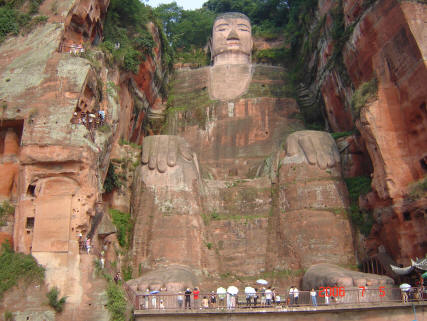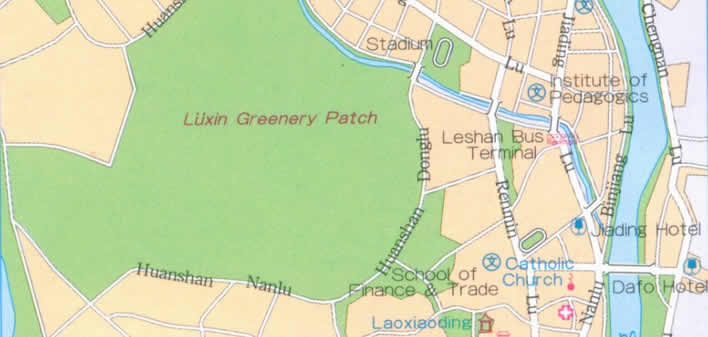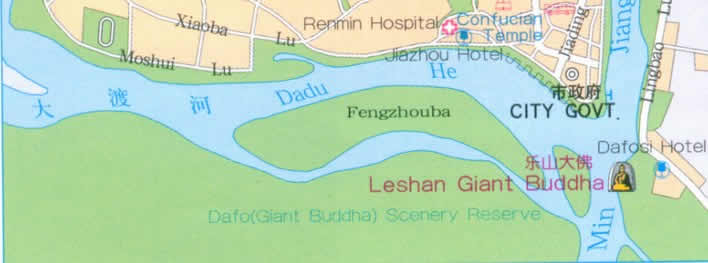
Leshan Giant Buddha from the riverboat

Leshan Giant Buddha from the riverboat
Stop 7: Leshan Giant Buddha - "Guardian of the Rivers"
Focus
Question:
How has the role of
water and Chinese religion merged here?
Portfolio
Questions: Why do people live the way they do?
Geography: The Leshan Giant Buddha is the largest sculpted one in the world (Remember, the Taliban dynamited the former largest one in Afghanistan (Article)). This giant 233 feet Buddha is carved out of a cliff face that lies at the confluence (coming together/intersection) of the Minjiang, Dadu and Qingyi rivers in the southern part of Sichuan Province, China. It faces the sacred Mt. Emei (Buddhist mountain where the first Buddhist temple in China was built.) and lies near the city of Leshan.
 Leshan Buddha Google Earth Map
Leshan Buddha Google Earth Map

 A map of Leshan and the Buddha (with rivers labeled)
A map of Leshan and the Buddha (with rivers labeled)
Background:
Construction of this giant sculpture began in 713 C.E. during the
Tang dynasty (Buddhism originated in India in the fifth century B.C.E., then spread to Asia).
A Chinese Buddhist monk wanted to create this Buddha sculpture so that it may
guard and calm the rough waters for flooding and passing ships. There were many
wrecks and floods that resulted in the death of many Chinese in the past.
Coincidentally, the massive construction resulted in so much stone being removed
from the cliff face and deposited into the river below that the currents were
indeed altered by the statue, making the waters safe for passing ships. There
are many different kinds of Buddhas. This one is a Maitreya Buddha, who is known
as the Buddha of the future. This future Buddha ensures a calm future of the
rivers he watches over.
Interesting Note: It is believed that the Buddhist Monk who started
this project gouged his own eyes out to show his devotion...could this also be
why he failed to finish it? (Construction was completed by his disciples years
later.)
 The head is 42.3 feet long, 38.2 feet wide.
The head is 42.3 feet long, 38.2 feet wide.
 This sculpture is carved on the side of the giant Buddha.
This sculpture is carved on the side of the giant Buddha.
 This is the cliff area that the Buddha is carved from. The local guides swear
one can see the outline of a sleeping Buddha in the profile of the cliffs here.
This is the cliff area that the Buddha is carved from. The local guides swear
one can see the outline of a sleeping Buddha in the profile of the cliffs here.
 This is the Minjiang River ("Jiang" means river) from the foot of the Giant Buddha.
This is the Minjiang River ("Jiang" means river) from the foot of the Giant Buddha.
Related Assignment: Buddha's Path to Enlightenment (Understanding the origin and purpose of Buddhism)
Photo Gallery:
Leshan Giant Buddha
Websites for More Information:
Virtual
Tour Panoramic Site (by UNESCO)